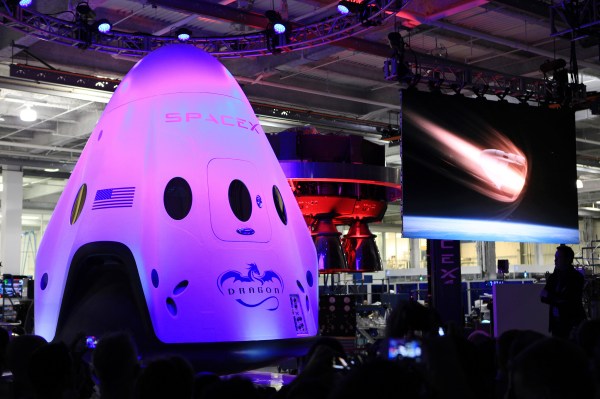It’s not entirely clear what happened during the launch of SpaceX‘s Commercial Resupply Services 7 (CRS-7) mission Sunday morning.
A SpaceX cargo ship set out to deliver samples and supplies to the astronauts onboard the International Space Station for its seventh resupply mission this morning. Sadly, that rocket and all supplies exploded mid-air, shortly after blast-off at 10:22 a.m EST.
A tweet from SpaceX founder Elon Musk suggests there was “an overpressure event in the upper stage liquid oxygen tank.”
This was a devastating blow to SpaceX and NASA, not just for all the hard work lost in seconds, but also for the loss of work to come. There were several supplies onboard the ship meant for studying human space travel – including a wet lab for researching which genes turn on and off in space – a good data point for determining longer missions in space.
Microsoft also supplied the ship with two HoloLens augmented reality devices as part of NASA’s project “Sidekick.” NASA intended to use these devices to determine use for human travel to Mars.
“This new technology could also empower future explorers requiring greater autonomy on the journey to Mars,” NASA’s Sam Scimemi said in a statement previous to the launch.
NASA administrator Charles Bolden reassured the public that the astronauts onboard the space station had enough supplies for several months and that NASA would continue to work with its other cargo partnerOrbital ATK for a resupply launch next summer.
Here is NASA’s full statement about the failed SpaceX Commercial Resupply Services 7 (CRS-7) mission:
“We are disappointed in the loss of the latest SpaceX cargo resupply mission to the International Space Station. However, the astronauts are safe aboard the station and have sufficient supplies for the next several months. We will work closely with SpaceX to understand what happened, fix the problem and return to flight. The commercial cargo program was designed to accommodate loss of cargo vehicles. We will continue operation of the station in a safe and effective way as we continue to use it as our test bed for preparing for longer duration missions farther into the solar system.
“A Progress vehicle is ready to launch July 3, followed in August by a Japanese HTV flight. Orbital ATK, our other commercial cargo partner, is moving ahead with plans for its next launch later this year.
“SpaceX has demonstrated extraordinary capabilities in its first six cargo resupply missions to the station, and we know they can replicate that success. We will work with and support SpaceX to assess what happened, understand the specifics of the failure and correct it to move forward. This is a reminder that spaceflight is an incredible challenge, but we learn from each success and each setback. Today’s launch attempt will not deter us from our ambitious human spaceflight program.”
